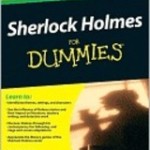A Scion Society of The Baker Street Irregulars

Data! Data! Data! – The Abbey Grange
“‘Data! Data! Data!‘ he cried impatiently. ‘I can’t make bricks without clay.’”
– The Adventures of The Copper Beeches (COPP)

This column is composed of material (Data!) developed for a short course called Appreciating Sherlock Holmes that I taught twice a year for 10 years in the Community Education Life Enrichment Program for a local community college. It is composed of “points of information” that are common to many / most / all of the 60 Canonical stories.
The information here has been researched by me or borrowed / stolen from many efforts of other Sherlockians.
HERE GOES This month’s story is The Adventure of the Abbey Grange
 CHRISTOPHER MORLEY SAID
CHRISTOPHER MORLEY SAID
“Come, Watson, come! The game is afoot!” is the lively opening of this adventure, while the doctor is still abed on a cold winter morning. Again young Stanley Hopkins appeals to Holmes for assistance, and they find a tragedy on high life at the picturesque old Abbey Grange. One of the richest men in Kent has been brained with his own poker. Holmes’s knowledge of port wine and sailor’s knots leads to the solution.
DUMMIES SHORT SUMMARY (From Sherlock Holmes for Dummies by Steven Doyle & David Crowder)
“A husband is dead and a wife is tied to a chair. It’s a clear case of home invasion. Or is it?
PUBLISHING HISTORY
This was the 39th of the 60 stories to be published.
In England, it was published in The Strand Magazine, September, 1904 .
In the U.S. it was published in Collier’s Weekly, December 31, 1904.
It is part of The Return of Sherlock Holmes collection published by George Newnes, Ltd., London, 1905 and McClure Phillip & Co., New York, 1905.
The British illustrator was Sidney Paget while the U.S. illustrator was Frederick Dorr Steele.
HOW MANY WORDS?
According to C. E. Lauderback, 1960 – – found on SHERLOCKIAN.NET website created by Chris Redmond and at 9,233 words ABBE has the 40th most words (#1 is VEIL – 4,499, #56 if NAVL – 12,701)
THE BEST OF SHERLOCK HOLMES (How do Sherlockians rate this story?)
1999 – The Sherlock Holmes Society of London voted it 22nd best
1999 – In the U.S., The Baker Street Irregulars voted it 21st best
CLASSIFYING THE CASE (From the Wandering Gipsies of Grimpen Mire of Decatur, Alabama)
This case is one of 23 classified as a MURDER where the perpetrator was either killed, arrested, or otherwise satisfactorily handled. And one of 4 where Holmes let the perpetrator go free. The others were BOSC, DEVI, and VEIL.
CHRONOLOGICALLY SPEAKING
Doyle was often very vague about stating WHEN the tale took place and included few contemporary references to help. Whether this was done intentionally or unthinkingly, the dating of events in the Canon is a very popular pastime pursued by several of our “scholars” researching and justifying their results to no end. We will again default to William Baring-Gould’s dating of Saturday, January 23, 1897 making it the 42nd of the 60 stories in time. This means that Holmes would be 43 and Watson 45.
WHAT ELSE HAPPENED IN YEAR 1897?
It is always interesting to see what else in happening at the same time as the stories.
- Victoria’s Diamond Jubilee.
- Destruction of Benin City.
- Uprising on India’s Northwest Frontier.
- First Women’s Institute in the world; established at Stoney Creek, Canada.
- Sir Henry Tate presents the Tate Gallery to the nation.
- Report of Royal Commission (Eversley) on agricultural depression.
- Employers’ Liability Act: responsibility for injuries to and compensation of employees injured at work.
- Royal Automobile Club, London.
- Trunk telephone lines transferred to control of the GPO.
- Trained nurses only to be employed in hospitals.
- Dreyfus affair.
- Visit of French President Faure to St. Petersburg cements Franco-Russian Alliance.
- Two German missionaries murdered in Shantung; German interest in China.
- Universal suffrage introduced in Austria.
- Austro-Russian treaty on Balkans relaxes tensions created by 30-day war between Greece and Turkey in Macedonia.
- Henry Havelock Ellis publishes Studies in Psychology of Sex.
- G. Wells publishes The Invisible Man.
- Roistand publishes Cyrano de Bergerac.
- Paul Dukas debuts The Sorcerer’s Apprentice.
- Gauguin paints Girls Bathing in Tahiti.
- Toulouse-Lautrec paints Marcelle.
- Sir J.J. Thomson discovers the electron.
- Aspirin marketed.
- McCreary patents an air-washer intended to purify air in a building; beginning of air-conditioning.
- Diesel engine invented.
- Sir Ronald Ross, bacteriologist, identifies the causes of malaria and studies the disease.
- Beginning of Monotype system of typesetting.
- A. Andre is killed attempting to explore the polar regions in a free-flying balloon.
HOLMES AND WATSON – PERSONAL INFO
Our duo, as usual, is sharing bachelor’s quarters at 221b.
DRAMATIS PERSONAE
One of the smallest casts of characters of any story.
- SIR EUSTACE BRACKENSTALL, the murder victim, “One of the richest men in Kent.”
- LADY BRACKENSTALL, his wife of a year. Formerly MARY FRASER of Adelaide, South Australia
- THERESA WRIGHT, life-long maid and companion of Lady B.
- CAPTAIN JACK CROCKER, admirer of Lady B. and the murderer.
- THE RANDALL GANG, a father and two sons, who committed the crime (?)
- STANLEY HOPKINS
“QUOTABLE SHERLOCK”
Several memorable things here.
- Holmes to Watson – “Come, Watson, come!” The game is afoot. Not a word! Into your clothes and come!””
- Holmes to Watson – “Hopkins has called me in seven times, and on each occasion his summons has been entirely justified. I fancy that every one of his cases has found its way into your collection, and I must admit, Watson, that you have some power of selection which atones for much which I deplore in your narratives. Your fatal habit of looking at everything from the point of view of a story instead of as a scientific exercise has ruined what might have been an instructive and even classical series of demonstrations. You slur over work of the utmost finesse and delicacy in order to dwell upon sensational details which may excite but cannot possibly instruct the reader.”
- Holmes to Watson – “We are moving in high life, Watson”
- Watson’s thought on Holmes – What were these commonplace rogues that he should soil his hands with them?
- Holmes to Watson – “Perhaps when a man has special knowledge and special powers like my own, it rather encourages him to seen complex explanation when a simpler one is at hand.”
- Holmes to Watson about Lady Brackenstall – “The lady’s charming personality must not be permitted to warp our judgment.”
- Holmes to Watson about Captain Crocker – “Once or twice in my career I feel that I have done more real harm by my discovery of the criminal than ever he had done by his crime. I have learned caution now, and I had rather play tricks with the law of England than with my own conscience.”
- Holmes to Watson about Stanley Hopkins’ limits – “What I know is unofficial; What he knows is official. I have the right to private judgment, but he has none. He must disclose all, or he is a traitor to his service.”
- Captain Crocker confessing to Holmes – “I believe you are a man of your word, and a white man.”
- Holmes to Watson on his character – “Watson, you are the British jury, and I have never met a man who was more eminently fitted to represent one.”
- Holmes to Captain Crocker – “Vox populei, vox Dei.”
HOLMES’ FEE
There are no mentions of a fee. (Of the fully recorded cases there are at least nine, REIG, BLAC, SIXN, GOLD, ABBE, CARD, DYIN, STUD, VALL, in which Holmes participated solely in order to assist the police…For Holmes there can have been little reward save the experience, and the privilege of paying his own expenses in following up on clues – McQueen)
SHERLOCK ON THE BIG SCREEN & THE LITTLE SCREEN
This month’s tale has only reached the screen 3 times, with only one you could have ever seen.
- 1922 The Abbey Grange with Eille Norwood as Holmes and Hubert Willis as Watson in their 40+ short movies. The National Film and Television Archive at the BFI has viewing copies of this film but it has not been released
- 1965 The Abbey Grange in a TV series episode with Douglas Wilmer as Holmes and Nigel Stock as Watson. It is considered a lost episode.
- 1986 The Abbey Grange as a TV series episode from BBC/Granada staring Jeremy Brett as Holmes and Edward Hardwicke as Watson.
SHERLOCK HOLMES IN DISGUISE
The Master of disguise used the deception of being disguised 14 times in 11 of the 60 stories, but no disguises used here.
UNRECORDED CASES (That involved Holmes)
Watson would tease / torture his readers with “I know something you don’t.” Oh my, how Sherlockians love this category. I have in excess of over 150 examples in my collection. None are named here but Holmes relates to Watson that Inspector Hopkins has called on him 7 times for help.
FAINTING IN THE CANON (courtesy of Sherlockian Karen Murdock)
Fainting is extremely common in the Canon, appearing, in some form, in 37 of the 60 tales. In 21 cases someone actually faints. In 22 cases someone almost faints. And in 5 cases someone pretends to faint. In this story – – – Lady Brackenstall claims to have been knocked unconscious by a burglar and then to have fainted when the burglar killed her husband. Good story, but it turns out that she is lying.
HOLMES’S PUBLISHED & PROJECTED WORKS
Sherlockians love this topic and are regularly searching for these items. Holmes mentions published or projected works in 11 of the stories. In this month’s tale Holmes tells Watson about his projected single volume The Whole Art of Detection.
IS THERE A DOCTOR IN THE HOUSE?
Victorian London, in the Holmes’ time, had approximately 1 doctor for every 100 people. 31 of the 60 tales have a doctor in them. This, of course, does not count Holmes’ Boswell. This listing is by Leslie Klinger in the Winter, 2015 edition of the Baker Street Journal. In this story there was no doctor involved or mentioned.
NEWSPAPERS (Real and Fictional)
Though included in only 20 tales some of our more obsessed Sherlockians love this one. Sorry, no newspapers mentioned here.
ANNOTATED SHERLOCK
The 60 Sherlock Holmes stories used English as spoken in England from the 1880’s until the 1910’s. Some words are foreign to us today and need a “contemporary translation.”. For example, our story has
“beeswing” — Scant, fine settlement in a wine bottle.
“we approached the case de novo” — anew; fresh
“to foment the bruise” — apply hot, moist cloths to the body; to treat with a poultice or warm medicinal compress
WEAPONS (from A Compendium of Canonical Weaponry by Dettman and Bedford)
… “a means by which one contends against another” … utilized in 57 of the 60 tales (all but CREE, 3STU, & YELL)… There are several general categories to classify “weapons” that include: firearms, human agents, cutlery, animals, blunt instruments, extortion, toxin, blackmail, and miscellaneous. In our story, which is short, you will find all of the following:
CUTLERY
Hat Pin – Used by Sir Eustice Brackenstall to torture his wife.
BLUNT INSTRUMENTS
Stick – Which Sir Eustice Brackenstall used to attack both his wife Mary and John Croker, her lover, or at least erstwhile lover.
Poker – From the dining room at Abbey Grange which Croker used to kill Brackenstall in self-defense.
HUMAN AGENTS
Fist – Which, according to the story told to Holmes by Lady Brackenstall, a member of the gang of burglars hit her with.
MISCELLANEOUS
Petrol – Used by Sir Eustice Brackenstall to burn up his wife’s pet dog.
Decanter – Which Brackenstall, in one of his drunken fits, hurled at Theresa Wright, his wife’s maid.
 Frank Mentzel, aka Merridew of Abominable Memory, has been catching up on reading some of the books he has ordered of late and is looking forward to autumn’s cooler temperatures.
Frank Mentzel, aka Merridew of Abominable Memory, has been catching up on reading some of the books he has ordered of late and is looking forward to autumn’s cooler temperatures.

Sorry, comments are closed for this post.